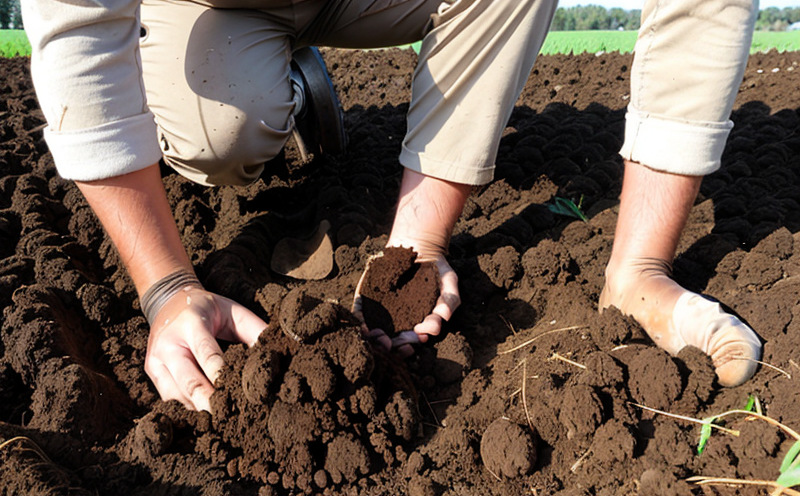Soil Infiltration Rate Testing
The soil infiltration rate is a critical parameter in agriculture and forestry testing. It refers to the speed at which water can penetrate into the soil surface, influencing its ability to support plant growth and sustain ecological balance. This test is essential for understanding how efficiently rainwater or irrigation water percolates through agricultural fields and forested areas, thereby affecting crop yield and ecosystem health.
Understanding soil infiltration rates helps in optimizing irrigation practices, preventing soil erosion, and managing water resources effectively. For instance, a low infiltration rate can lead to surface runoff, increasing the risk of water pollution and sediment transport, while high rates might cause rapid leaching of nutrients from the root zone. This test is pivotal for sustainable agricultural practices and environmental conservation.
Testing soil infiltration rates involves controlled laboratory or field experiments where a known volume of water is applied to the surface of the soil over a specified period. The amount of water that passes through the soil layer per unit time is measured, providing insights into the soil's permeability. This data can then be used to tailor management strategies for better resource utilization and environmental protection.
Accurate measurement is crucial as it directly impacts crop performance and overall land sustainability. Factors such as soil texture, organic matter content, compaction level, and moisture content play significant roles in determining the infiltration rate. Therefore, understanding these factors helps in interpreting the results accurately and implementing appropriate interventions to enhance soil health.
Standard methods for measuring soil infiltration rates include the ring infiltration test (ISO 11268-3) and the infiltrometer method (ASTM D5847). These techniques provide a reliable basis for quantifying the rate at which water infiltrates into soil. The results are typically expressed as millimeters per hour, allowing for consistent comparison across different samples or locations.
For quality managers, compliance officers, R&D engineers, and procurement professionals involved in agricultural and forestry projects, understanding this parameter is vital. It aids in making informed decisions about land use, irrigation systems, and fertilization practices, ultimately contributing to more sustainable and productive operations.
Industry Applications
- Agriculture: Optimize irrigation schedules for better water management and crop yield.
- Forestry: Assess the impact of logging activities on soil health, aiding in reforestation efforts.
- Environmental Management: Monitor changes in soil quality due to climate change or pollution.
- Aquaculture: Ensure proper water flow and distribution for optimal fish and shrimp farming conditions.
Environmental and Sustainability Contributions
- The test helps in reducing soil erosion by identifying areas prone to runoff, promoting the use of best management practices.
- It supports sustainable land use planning by providing data that aids in choosing appropriate crops or vegetation for different soil types.
- Educates stakeholders on the importance of maintaining healthy soils, which is crucial for long-term environmental health and biodiversity.
Use Cases and Application Examples
In agricultural settings, soil infiltration rate testing can be used to:
- Determine the effectiveness of different tillage methods on water retention.
- Evaluate how organic amendments affect soil structure and permeability.
- Assess the impact of cover crops on soil health and water infiltration rates.
In forestry, this test can help:
- Measure the effect of different tree species on soil infiltration and nutrient cycling.
- Evaluate the efficiency of erosion control measures in newly planted areas.
- Determine the best times to plant trees based on soil moisture content and water availability.





